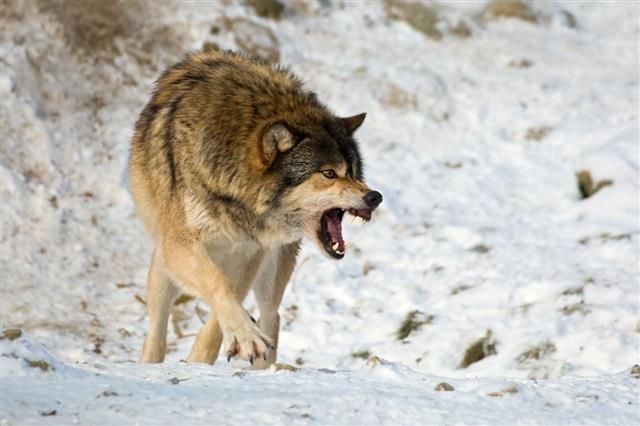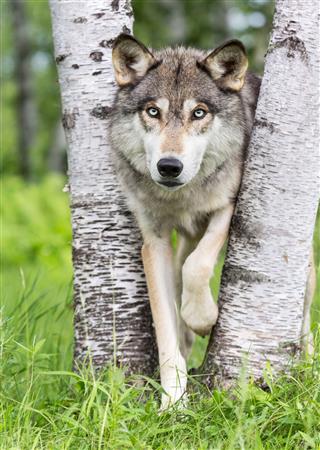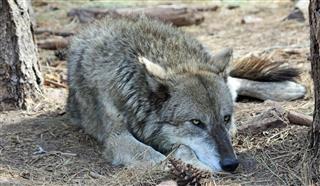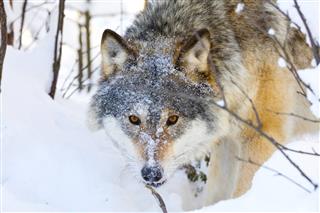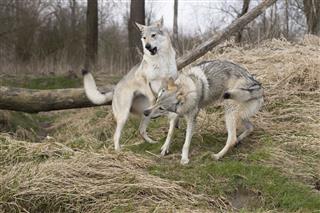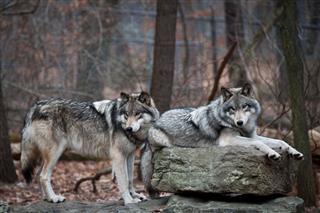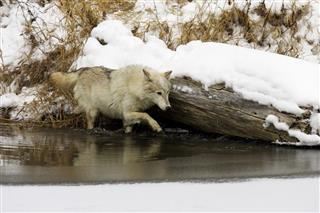
Since ancient times, wolves have been associated with danger, evil, and feared by people. But are they really the way folklores depict them?
Did You Know?
In the 17th century, the population of wolves in Ireland was significantly large and varied between 500 to 1000. Ireland was thus called “wolf-land”.
More often than not, wolves are attributed to the Gray wolf. Gray wolf belongs to the genus Canis and is the largest of the family Canidae. Often depicted as ferocious animals, wolves have negated the age-old notions that they pose a serious threat to humans. The gray wolf and its 37 subspecies show a varied display of amusing behavior and features. Let’s take a look at some fascinating facts about wolves that continue to surprise many.
» Wolves are known to hunt in packs and this pack is divided hierarchically. In a pack, which can comprise 2 to almost 30 wolves, mating takes place only between the alpha male and the alpha female. The rest of the pack is responsible for taking care of the cubs while the breeding pair is away.
» The first digit on a wolf’s claw can be rotated. The claw of a wolf is sharp since it is used to hold a prey larger in size than itself.
» Wolves have particular webbings between each toe, which helps them move across the ground with ease. In order to keep their paws from tiring, wolves have a tendency to run on their toes. This also helps them in executing actions, such as stopping, running, and turning.
» The jaw of a wolf has a crushing pressure of 1,500 pound per square inch — that’s almost twice the pressure exerted by a dog’s jaw!
» The mother of a newly born wolf cub helps it to urinate by massaging the cub’s belly with her tongue.
» Contrary to the popular belief, wolves have a natural instinct of fearing all humans and do not attack them unless provoked.
» The gray wolves are one of the most studied animals in the world, and are the only ancestors of dogs.
» Wolves breed once a year during the period that starts towards the end of February and lasts till just after the start of March.
» To communicate amongst themselves, wolves often use several facial expressions, sounds, and body language.
» Howling is a distinct form of communication often used to assemble the pack to detect the location of other wolves and to indicate an alarm or a warning.
» Wolves, when in a pack, do not howl at the same time. One is followed by another immediately, thus giving an impression that there are more wolves than the actual number.
» Research reveals that wolves belonging to different geographical locations tend to howl in a different manner — the howling pattern of North American wolves is louder and sharper than those of European wolves, whose howls are more prolonged.
» A gray wolf always keeps his head aligned to the rest of the body and raises it only when it senses a warning.
» The sense of smell of gray wolves is weaker than that of the hunting dogs, but they possess the sharpest night vision amongst all canids.
» While running, wolves always hold their head low and slanted to a side. Holding their head in this manner helps them direct one ear in the forward direction and the other in the backward direction. This stance makes it easier for the wolf to best use its hearing abilities without any hindrance.
» Once a pack of wolves detects the scent of a prey, they sometimes celebrate by putting their noses together and wagging their tails, before heading in the direction for the kill.
» After killing the prey, the mating pair feeds on it first, followed by the cubs. The remaining portion is then eaten by the remaining wolves in the pack by dragging the kill to a secluded spot.
» Usually, wolves begin feeding on the larger organs (internal) of the prey, such as the heart and the lungs, keeping the muscles for the last.
» Often, wolves give up chasing their prey after about 1.5 miles. In an attempt to slow down or prevent their prey from escaping, it has been observed that North American wolves force their prey to go on steep slopes, banks, and thick ice to trap them.
» The only subspecies of wolves that is not threatened is the arctic wolf. During winter, these wolves are able to grow a second layer of protective fur to survive the extreme conditions.
» The last wolf killed in England was in the late 14th and early 15th century, whereas in Ireland it is believed to be in the later part of the 18th century.
Although hunting of wolves on a minor level is still prevalent in some countries, conscious efforts to increase its population has led to its classification as “Least Concern” by the IUCN.




